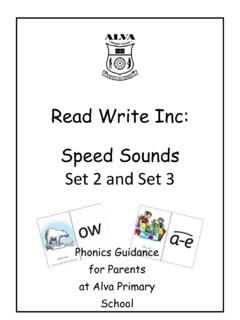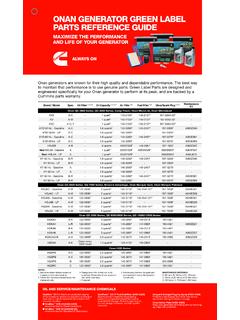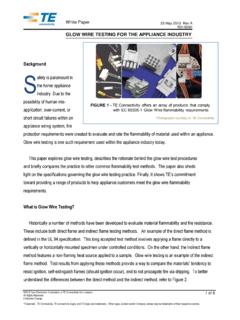Transcription of Higher Chemistry Past Papers - Glow Blogs
1 Higher Chemistry past PapersSeptember 20201 About this study document has been designed to make revision and self-marking easy forstudents studying Higher Chemistry in those interested in how it was made, it has been compiled using information in this publication has been reproduced to support SQA qualifi-cations only on a noncommercial basis and can only be shared on that How to following two pages contain tables which cross-reference the course topicswith SQA question numbers for the years first table is for multiple choice questions; the second accesses Section2 questions.
2 Each question number is hyperlinked to the SQA question andclicking it will take you there. The question pages have further hyperlinks takingyou either back to the topic grid or to the SQA marking course, you can always just treat it as a succession of question Papers withmarking instructions. This will be useful for end-of-course timed Higher past Papers - Multiple Choice QsTopic20152016201720182019 Unit 1 Periodicity2, 34 StructureandBonding1, 4, 51, 2, 31, 3, 4,551, 2, 16 Oxidising and Re-ducing Agents2017, 18,191318, 193, 4 Unit 2 Systematic carbonchemistry15127, 107, 87, 9 Alcohols, , Esters, Fatsand Oils7, 8, 9,1478, 195 Soaps, Detergentsand Emulsions9, 10 Proteins8106 Oxidation of Food6, 10, 11126, 1126, 98, 11 Fragrances1351110 Skincare9 Unit 3 Controlling the rate1941, 2, 320, 22, 24 Getting the mostfrom reactants136.
3 1412,13,1413,14,15, 17, 18 Equilibria181517, 2015, 2023 Chemical Energy16, 1714, 1612, 1816, 1721 Chemical Analysis2015 Problem Solving161112, 19, 25 Table 1:Topic Grid Multiple Choice2 CfE Higher past Papers - Section 2 QuestionsTopic20152016201720182019 Unit 1 Periodicity1(b)(ii)2a-b1b1a 2a2a-bStructureandBonding1a&b(i&iii)12ci 3a5cii12ai1a1c5cii 6c1b 2b-c9b2c 4di 6a12bOxidising and Re-ducing Agents12aii11bii9bi11b12dUnit 2 Systematic carbonchemistry4d(ii)5bii4eii7biiiAlcoho ls, , Esters, Fatsand Oils11a-c5 7biii-iv7c4a3ci 6a 9c4c 4dii 7bSoaps, Detergentsand Emulsions9a12aProteins669c6c8aOxidation of Food13a11bi&iii6a47cii9diii4eFragrances4 d(i)
4 7a4diiiSkincare12cii-iii76b7aUnit 3 Controlling the rate21a 1c2aii2aiv9aGetting the mostfrom reactants3b 7a 12aiii3b 7ciii8bii5aii 9bii2cii 3cii-iii 7b11c 12b1ai6aiii6bii 8b-c10b-cEquilibria8b8a2aiii12cChemical Energy7b-c8c 9b2ai 4b5b85 9cChemical Analysis3a 10 12ai1bi5ci6d11a11biv2b5ai5ci 72d 3a-b9d 11a4bii 9b 10 Open ended5 94 103 85 103 11 Problem Solving4(a-c) 4e 8a11d 12b 13b1bii2c3c6eii8bi9a126b7d9d 104eii7ci9a12a12bii2d 4a 4bi6a 6biTable 2:Section 2 Questions3H NationalQuali cations2015 Instructions for the completion of Section 1 are given on Page two of your question and answer booklet X713/76 your answers on the answer grid on Page three of your question and answer may be made to the Chemistry Higher and Advanced Higher Data leaving the examination room you must give your question and answer booklet to the Invigilator; if you do not you may lose all the marks for this Section 1 Questions*X7137602*THURSDAY, 28 MAY1:00 PM 3:30 PMPBPage twoSECTION 1 20 marksAttempt ALL questions 1.
5 The elements nitrogen, oxygen, fluorine and neon A can form negative ionsB are made up of diatomic moleculesC have single bonds between the atomsD are gases at room temperature. 2. Which of the following equations represents the first ionisation energy of fluorine? A F (g) F(g) + e B F (g) 12F2(g) + e C F(g) F +(g) + e D 12F2(g) F +(g) + e 3. Which of the following atoms has least attraction for bonding electrons? A CarbonB NitrogenC PhosphorusD Silicon 4. Which of the following is not an example of a van der Waals' force?
6 A Covalent bondB Hydrogen bondC London dispersion forceD Permanent dipole permanent dipole attractionGo to AnswersGo to Topic GridPage three 5. Which of the following has more than one type of van der Waals' force operating between its molecules in the liquid state?NHHHBrBrOCOCHHHHABCD 6. Oil molecules are more likely to react with oxygen in the air than fat the reaction the oil molecules A are reducedB become rancidC are hydrolysedD become unsaturated. 7. Which of the following mixtures will form when NaOH(aq) is added to a mixture of propanol and ethanoic acid?
7 A Propanol and sodium ethanoateB Ethanoic acid and sodium propanoateC Sodium hydroxide and propyl ethanoateD Sodium hydroxide and ethyl propanoate 8. Oils contain carbon to carbon double bonds which can undergo addition reactions with iodine number of an oil is the mass of iodine in grams that will react with 100 g of line in the table shows the oil that is likely to have the lowest melting point?OilIodine numberACorn 123 BLinseed 179 COlive 81 DSoya 130[Turn overGo to AnswersGo to Topic GridPage four 9. When an oil is hydrolysed, which of the following molecules is always produced?]
8 A COOHCHOHCOOHB CH2 OHCHOHCH2 OHC C17H35 COOHD C17H33 COOH 10. Enzymes are involved in the browning of cut reaction taking place is: CCCCCCHHHOHOHH2 CCCCCCO+2H2 OHHHHOO12+ Which of the following correctly describes the above reaction?A OxidationB ReductionC HydrolysisD Condensation 11. Which of the following statements is correct for ketones? A They are formed by oxidation of tertiary They contain the group They contain a carboxyl They will not react with Fehling s to AnswersGo to Topic GridPage five 12. Carvone is a natural product that can be extracted from orange line in the table correctly describes the reaction of carvone with bromine solution and with acidified potassium dichromate solution?
9 Reaction with bromine solutionReaction with acidified potassium dichromate solutionAno reactionno reactionBno reactionorange to greenCdecolourisesorange to greenDdecolourisesno reaction 13. The structure of isoprene isA H3 CCHCH3CH2 COHOB H2 CCCHCH2CH3C H2 CCHCHCH2D H2 CCCH2CH2CH3OH[Turn overGo to AnswersGo to Topic GridPage six 14. The antibiotic, erythromycin, has the following remove its bitter taste, the erythromycin is reacted to give the compound with the structure shown (CH2)2 COOCH2CH3 OWhich of the following types of compound has been reacted with erythromycin to produce this compound?]
10 A AlcoholB AldehydeC Carboxylic acidD Ketone 15. Which of the following is an isomer of 2,2-dimethylpentan-1-ol? A CH3CH2CH2CH(CH3)CH2 OHB (CH3)3 CCH(CH3)CH2 OHC CH3CH2CH2CH2CH2CH2CH2CH2 OHD (CH3)2 CHC(CH3)2CH2CH2 OHGo to AnswersGo to Topic GridPage seven 16. Consider the reaction pathway shown below. H = 210 kJ mol 1 H = 50 kJ mol 1 H = 86 kJ mol 1 WXYZA ccording to Hess s Law, the H value, in kJ mol 1, for reaction Z to Y is A +74 B 74 C +346 D 346.[Turn overGo to AnswersGo to Topic GridPage eight 17.]












